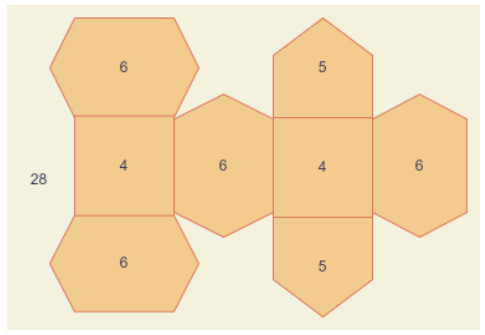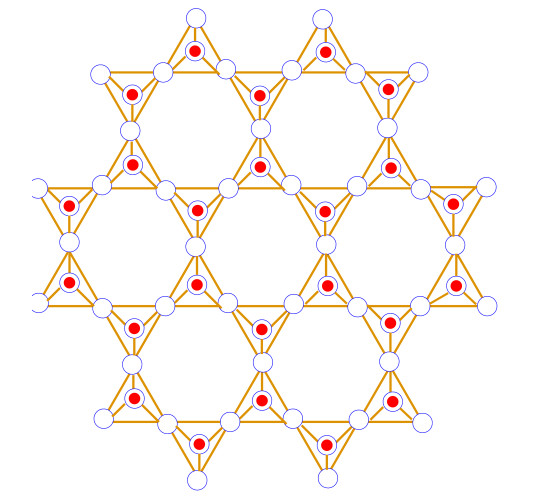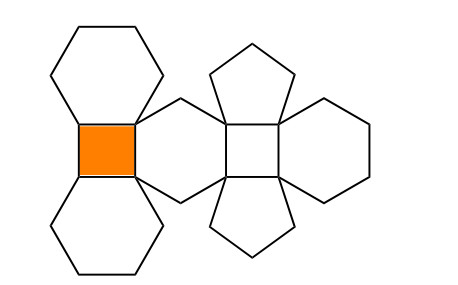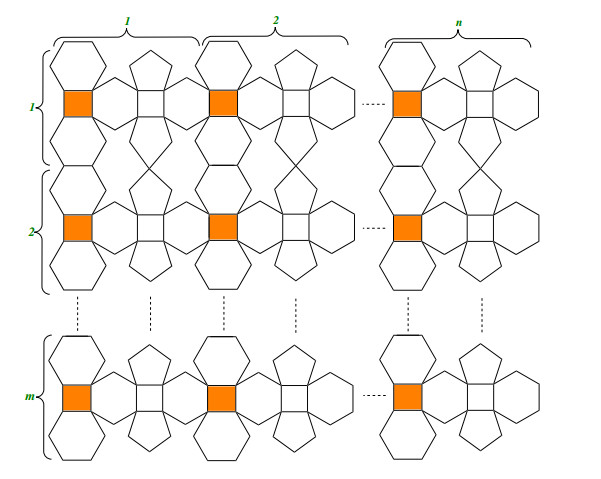1.
Introduction
Anomalous diffusions are ubiquitous in the natural world, the probability distributions of which are usually governed by equations with fractional operators. It is well known that the diffusion equation ∂tu(t,x)=Δu(t,x) with u(0,x)=f(x) allows the stochastic solution u(t,x)=Ex[f(Bt)], where Bt is Brownian motion started at x∈Rd with infinitesimal generator Δ, describing the normal diffusion that shows, e.g., heat propagation in homogeneous medium. Owing to particle sticking and/or trapping phenomena, the following equation
has been used to simulate the anomalous diffusions displaying subdiffusive behavior widely such as thermal diffusion in fractal media, protein diffusion within cells, and contaminant transport in groundwater. The Caputo derivative ∂βt, with fractional order β∈(0,1), can be defined by
where the Gamma function Γ(λ):=∫∞0tλ−1e−tdt. In particular, Scheffer and Meerschaert [1, Theorem 5.1] recognized, based on [2], that the stochastic representation u(t,x)=Ex[f(BEt)] satisfies the equation (1.1), where Et is an inverse β-stable subordinator that is independent of Bt.
Solutions of the linear as well as nonlinear fractional partial differential equations have attracted a lot of attention and have been extensively discussed; see, e.g., [3,4,5,6,7,8,9] and the references therein. There are also some theoretical results and numerical methods for nonlinear time-fractional Schrödinger equations [10,11,12,13]. It can be noted that most of the quoted papers are concentrated on the Caputo derivative of fractional order. This attention has been gained by anomalous diffusion phenomena emerging in diverse fields containing mathematics, physics, engineering, biology, chemistry, hydrology, and geophysics, etc [14,15,16,17,18]. There are also some discussions on the semilinear parabolic equations with singular potentials [19].
The present paper investigates the generalized time fractional Schrödinger equation
where κ is bounded in X with ‖κ‖∞≤K, X is a Lusin space, being a topological space homeomorphic to a Borel subset of a compact metric space. Denote X={Xt,t∈[0,∞);Px,x∈X} as a time-homogeneous strong Markov process on X whose sample paths are right continuous and have left limits on X∪{∂}, where ∂ is an isolated cemetery point outside X and Xt=∂ for every t≥ζ:=inf. The transition semigroup \{P_t\}_{t\geq0} of X is defined as
for any bounded or nonnegative function f on \mathcal{X} that is extended to \mathcal{X}\cup\{\partial\} by setting f(\partial) = 0 . Here \mathbb{P}^x denotes the probability law of X starting from position x , and \mathbb{E}^x is the mathematical expectation taken under probability law \mathbb{P}^x . We assume in addition that the strong Markov process X on \mathcal{X} is \nu -symmetric, i.e., for any nonnegative functions f and g on \mathcal{X} and t > 0 ,
where \nu is a \sigma -finite measure on \mathcal{X} with full support. The transition semigroup is strongly continuous on L^2(\mathcal{X}; \nu) with \|P_t\|\leq1 for every t\geq0 ; denote its infinitesimal generator by (\mathcal{L}, \mathcal{D}(\mathcal{L})) . Then \mathcal{L} is a nonpositive definite self-adjoint operator in L^2(\mathcal{X}; \nu) [20,21]. The notations \|\cdot\| and \langle\cdot, \cdot\rangle are, respectively, the norm and inner product of L^2(\mathcal{X}; \nu) . Besides, the generalized time fractional derivative is defined by
where the given function w:(0, \infty)\to[0, \infty) is unbounded, non-increasing, and having \int_0^\infty\min\{1, s\}(-dw(s)) < \infty . Such a function w is in one-to-one correspondence with an infinite Lévy measure \mu on (0, \infty) so that w(x) = \mu(x, \infty) . This Lévy measure \mu in turn is in one-to-one correspondence with a driftless subordinator \{S_t\}_{t\geq0} having
as its Laplace exponent; that is
In particular, when w(s) = \frac{1}{\Gamma(1-\beta)}s^{-\beta} for \beta\in(0, 1) , \partial_t^wf is just the Caputo derivative of order \beta in (1.2). Through out this paper, \{S_t\}_{t\geq0} is a driftless subordinator with S_0 = 0 that has a density p(t, r) for every t > 0 and \phi(\lambda) is the Laplace exponent of the driftless subordinator \{S_t\}_{t\geq0} having Lévy measure \mu . Define E_t = \inf\{s > 0: S_s > t\} for t > 0 , the inverse subordinator. The assumption that the Lévy measure \mu is infinite, which is equivalent to w(x) = \mu(x, \infty) being unbounded, shows that t\mapsto S_t is strictly increasing and hence t\mapsto E_t is continuous.
When \kappa = 0 in equation (1.3) , Chen [22, Theorem 2.1] shows that the existence and uniqueness of stochastic strong solution take a form:
where the infinitesimal generator \mathcal{L} generates a uniformly bounded and strongly continuous semigroup in continuous function space C_\infty(\mathcal{X}) or L^p space. The result in [22] for strong solution was extended to that of weak solutions in [23] when the infinitesimal generator \mathcal{L} is a symmetric operator in Hilbert L^2 space. The main characteristic of the method in [22,23] is a detailed analysis of the subordinator associated with the function w together with a stochastic representation of the solution. Recently, the authors [24, Page 6022] and [25, Remark 3.3] point out that the stochastic representation of equation (1.3) takes a different form. When \kappa\geq0 , it follows directly from [22, Theorem 2.1] that the unique solution to (1.3) is given by
The reason is that \mathcal{L}^\kappa = \mathcal{L}-\kappa(x) with \mathcal{D}(\mathcal{L}^\kappa) = \mathcal{D}(\mathcal{L}) is the infinitesimal generator in terms of strongly continuous contraction semigroup \{P^\kappa_t\}_{t\geq0} induced by the subprocess X^\kappa of X killed at rate \kappa(x) , that is,
The stochastic representation (1.5) seems to be the solution to equation (1.3) in the case that the potential \kappa is signed. However, this conclusion has not been proved. To overcome this difficulty, we first study the existence and uniqueness of the weak solution for (1.3) by utilizing the contraction mapping principle. Then we establish regularity of this solution to obtain the strong solution of (1.3). To the best of our knowledge, the regularity investigation of equation (1.3) is largely missing in the literature, apart from the case \kappa\geq0 [25]. We will try to make some contributions to this research field. The current research can be viewed as a sequel to [22,23,25].
2.
Preliminaries and main results
For a real-valued function f defined on [0, \infty) , we use \widehat{f} to denote its Laplace transform,
whenever the integral is absolutely convergent. Recall from [22] that \widehat{w}(\lambda) = \frac{\phi(\lambda)}{\lambda} for \lambda > 0 .
Let G^S(s): = \int_0^\infty p(r, s)dr be the potential density of the subordinator S . Since S is transient (see [26, Theorem 35.4]),
i.e., (r, s)\mapsto p(r, s) is an integrable function on [0, \infty)\times[0, t] for every t > 0 . In fact, by [27, Proposition III.1], there exist constants C_1, \; C_2 > 0 such that
We will need the following estimates from Chen [22].
Lemma 2.1. [22, Lemma 2.1 and Corollary 2.1] It holds that:
(i) Define G(0) = 0 and G(t) = \int_0^tw(x)dx for all t > 0 . We have that for every t, r > 0 , 0\leq\int_0^tw(t-s)\mathbb{P}(S_r\geq s)ds = G(t)-\mathbb{E}[G(t-S_r)\mathbf{1}_{\{t\geq S_r\}}] .
(ii) \mathbb{P}(S_r\geq t) = \int_0^r\mathbb{E}[w(t-S_s)\mathbf{1}_{\{t\geq S_s\}}]ds for every r > 0 and t\in(0, \infty)\setminus\mathcal{N} , where the Borel set \mathcal{N}\subset(0, \infty) has zero Lebesgue measure.
(iii) \int_0^\infty\mathbb{E}[w(t-S_s)\mathbf{1}_{\{t\geq S_s\}}]ds = 1 for t\in(0, \infty)\setminus\mathcal{N} .
Theorem 2.2. Set X: = \left\{u\in C([0, \infty); L^2(\mathcal{X}; \nu)); \; \sup_{t\geq0}e^{-kt}\|u(t, \cdot)\| < \infty\right\} with norm \|u\|_X = \sup_{t\geq0}e^{-kt}\|u(t, \cdot)\| . Let g\in L^2(\mathcal{X}; \nu) . Then equation (1.3) has a unique weak solution u\in X with stochastic representation (1.5) in the sense that for every t\in(0, \infty) and \varphi\in\mathcal{D}(\mathcal{L}) ,
Moreover,
and
Proof of Theorem 2.2 . (Existence) We prove that equation (1.3) has a weak solution u\in X using the contraction mapping principle. For u\in X , we define
First, it is needed to show that T(u)\in X . Clearly, for g\in L^2(\mathcal{X}; \nu) , \sup_{t\geq0}\|u_1(t, \cdot)\|\leq\|g\| . Since t\mapsto E_t is continuous a.s. and \{P_t\}_{t\geq0} is a strongly continuous contraction semigroup in L^2(\mathcal{X}; \nu) , we have by the bounded convergence theorem that t\mapsto u_1(t, \cdot) is continuous in L^2(\mathcal{X}; \nu) . For u_2(t, \cdot) , we have for every given t\geq0 ,
Thus, u_2(t, \cdot) is well defined as an element in L^2(\mathcal{X}; \nu) . We now show the continuity of t\mapsto u_2(t, \cdot) in L^2(\mathcal{X}; \nu) . For t\geq0 , \Delta t > 0 ,
Using (2.2) and the fact \lim_{r\to\infty}\phi(r) = \infty in the first term, L^1 -continuity of the integrable function (r, s)\mapsto p(r, s) on [0, \infty)\times[0, t+1] in the second term, one can see that as \Delta t\to0 both terms go to zero.
Now we show that u_2 belongs to X . By (1.4), we have
Next, one can see that T is a contraction mapping. Indeed, for v_1 , v_2\in X ,
which implies that \|Tv_1-Tv_2\|_X < \|v_1-v_2\|_X for large enough k . Hence, there exists a unique fixed point u\in X such that
Now we show that u appearing in (2.5) satisfies the equation (2.3). Denote u = u_1-u_2 . For u_1 , we have for every t\geq0 and \varphi\in\mathcal{D}(\mathcal{L}) ,
The first equality follows from \mathbb{P}(E_t\leq r) = \mathbb{P}(S_r\geq t) ; the second is justified by the Riemann sum approximation of Stieltjes integrals; the third follows from self-adjointness of \{P_r\}_{r\geq0} and Lemma 2.1 (i); and the last follows the integration by parts. On the other hand, we find that for every t\geq0 and \varphi\in\mathcal{D}(\mathcal{L}) ,
the second equality of which follows from Lemma 2.1 (ii); the third one is an application of Tonelli's Theorem and a simple change of variables. Thus, by (2.6) and (2.7) we conclude that for every t\geq0 and \varphi\in\mathcal{D}(\mathcal{L}) ,
Next, we consider u_2 , we have for every t\geq0 ,
the first equality of which follows the definition of u_2 ; the second and the third ones are application of Tonelli's Theorem and a simple change of variables; the fourth one is due to Lemma 2.1 (i). Thus, for every \varphi\in\mathcal{D}(\mathcal{L}) and t\geq0 , by the self-adjointness of \{P_r\}_{r\geq0} and Fubini theorem, we have
Then, by a direct computation, we have
Thus by (2.9) and (2.10) one can conclude that for every t\geq0 and \varphi\in\mathcal{D}(\mathcal{L}) ,
Hence by (2.8) and (2.11), u appearing in (2.5) satisfies the equation (2.3).
(Uniqueness) For the uniqueness of weak solution of equation (1.3), it is enough to show that u solves (2.3) if and only if u satisfies (2.5). The 'if' direction has been proved by the above discussion. For the 'only if' direction, let u\in X satisfy (2.3). Combining (2.3), (2.8), and (2.11), we have for every t\geq0 and \varphi\in\mathcal{D}(\mathcal{L}) ,
Let h(t, x): = u(t, x)-u_1(t, x)+u_2(t, x) . We have \|h(t, \cdot)\|\leq Ce^{kt} for large enough k . Therefore for every \lambda > k , \widehat{h}(\lambda, \cdot)\in L^2(\mathcal{X}; \nu) . Taking Laplace transform w.r.t. t on both sides yields that for every \lambda > k and \varphi\in\mathcal{D}(\mathcal{L}) ,
That is, for every \lambda > k and \varphi\in\mathcal{D}(\mathcal{L}) ,
Since \mathcal{L} is the infinitesimal generator of strongly continuous contraction semigroup \{P_t\}_{t\geq0} on Banach space L^2(\mathcal{X}; \nu) , the resolvent G_{\phi(\lambda)} = \int_0^\infty e^{-\phi(\lambda)t}P_tdt is well defined and is the inverse to \phi(\lambda)-\mathcal{L} . Taking \varphi = G_{\phi(\lambda)}\psi yields that,
Thus, we have \widehat{h}(\lambda, \cdot) = 0 for every \lambda > k . By the uniqueness of Laplace transform, we have h(t, \cdot) = 0 for a.e. t\geq0 . Since t\mapsto h(t, \cdot) is continuous for t\geq0 , we conclude that h(t, \cdot) = 0 for t\geq0 , and hence u = u_1-u_2 satisfies (2.5).
Remark 2.3. Similar to the above discussions, when the nonlinear function f satisfies Lipschitz condition, i.e., there exists a positive constant \mathcal{K} such that for t\geq0 and \phi_1, \phi_2\in L^2(\mathcal{X}; \nu) ,
then the nonlinear time fractional equation
has an unique weak solution in the sense that for every t\in(0, \infty) and \varphi\in\mathcal{D}(\mathcal{L}) ,
Proof of Theorem 2.2 -continued. (Stochastic representation) Denote
Then we have
It remains to establish for t > 0 , the stochastic representation defined by (1.5) satisfies (2.5), i.e.,
On the one hand, denote by \mathcal{F}^S the \sigma -field generated by the subordinator S . By the independence between X and S (and hence its inverse E ) and the Markov property of X ,
By Lemma 2.1 (ii), taking Laplace transform w.r.t. t yields that for \lambda > k ,
On the other hand, taking Laplace transform w.r.t. t yields that for \lambda > k ,
Combining (2.13), (2.14), and (2.15), Eq. (2.12) can be proved by the uniqueness of Laplace transform.
(Regularity) One has the estimate \|(-\mathcal{L})^\alpha P_t\|\leq C_\alpha t^{-\alpha} for t > 0 by utilizing spectral representation of the self-adjoint operator \mathcal{L} . By Lemma 2.1 (ii), for t > 0 ,
For given t > 0 , by (2.1),
Then, for a.e. t > 0 , \int_0^\infty\frac{p(r, t)}{r^\alpha}dr < \infty . By Lemma 2.1 (iii), for a.e. t > 0 ,
For each t > 0 , using Lemma 2.1 (i) and the Fubini theorem,
Thus, for a.e. t > 0 , \int_0^\infty\frac{1}{r^\alpha}\mathbb{E}[w(t-S_r)\mathbf{1}_{\{t\geq S_r\}}]dr < \infty. It follows that u_1(t, \cdot)\in \mathcal{D}((-\mathcal{L})^\alpha) for a.e. t > 0 . By the monotonicity of t\mapsto\mathbb{E}[\frac{1}{E_t^\alpha}] , u_1(t, \cdot)\in \mathcal{D}((-\mathcal{L})^\alpha) for t > 0 . Moreover, we have for each t > 0 ,
and
In addition, by Lemma 2.1 (ii) and the Fubini theorem, for t > 0 ,
Thus we have for t > 0 ,
It follows that for t > 0 ,
We now show the continuity of t\mapsto(-\mathcal{L})^\alpha u_1(t, \cdot) in L^2(\mathcal{X}; \nu) . By (2.19) and the integration by parts, for t > 0 , \Delta t > 0 ,
Hence, by Levi monotone convergence theorem, as \Delta t\to0 ,
We next consider u_2 , for given t\geq0 , by (2.17),
It follows that u_2(t, \cdot)\in\mathcal{D}((-\mathcal{L})^\alpha) for t\geq0 . Moreover, we have for each t\geq0 ,
and
We now show the continuity of t\mapsto(-\mathcal{L})^\alpha u_2(t, \cdot) in L^2(\mathcal{X}; \nu) . For t\geq0 , \Delta t > 0 ,
Using Levi monotone convergence theorem in the first term, L^1 -continuity of the integrable function (r, s)\mapsto p(r, s)/r^\alpha on [0, \infty)\times[0, t+1] in the second term, one can see that as \Delta t\to0 both terms go to zero.
When \kappa and g have some regularity, we show that u appearing in Theorem 2.2 is a unique strong solution of equation (1.3) .
Theorem 2.4. Suppose that g\in\mathcal{D}((-\mathcal{L})^\epsilon) with \epsilon > 0 small enough, and (\kappa(\cdot)u(t, \cdot))\in\mathcal{D}((-\mathcal{L})^\epsilon) for t\geq0 with \|(-\mathcal{L})^\epsilon(\kappa(\cdot)u(t, \cdot))\|\leq C_\kappa\|(-\mathcal{L})^\epsilon u(t, \cdot)\| for some constant C_\kappa . Then u is the unique strong solution of equation (1.3) satisfying u(t, \cdot)\in\mathcal{D}(\mathcal{L}) for a.e. t > 0 and \int_0^T\|\mathcal{L}u(t, \cdot)\|dt < \infty for T > 0 in the sense that for every t > 0 ,
Moreover,
Proof. By g\in\mathcal{D}((-\mathcal{L})^\epsilon) and the similar calculations as the proof of (2.4), we have u\in C([0, \infty); \mathcal{D}((-\mathcal{L})^\epsilon)) . It remains to establish for a.e. t > 0 , u(t, \cdot)\in\mathcal{D}(\mathcal{L}) and \int_0^T\|\mathcal{L}u(t, \cdot)\|dt < \infty for T > 0 , and hence (2.3) can be strengthened to (2.23) by the fact that \mathcal{D}(\mathcal{L}) is dense in L^2(\mathcal{X}; \nu) .
In fact, by the same arguments as those in (2.16), we have for t > 0 ,
Hence u_1(t, \cdot)\in \mathcal{D}(\mathcal{L}) and for t > 0 ,
Let \widetilde{u}_1(t, x) = \mathbb{E}[P_{E_t}(-\mathcal{L})^\epsilon g(x)] , by (2.18),
For u_2 , by (2.17) and \|(-\mathcal{L})^\epsilon(\kappa(\cdot)u(t, \cdot))\|\leq C_\kappa\|(-\mathcal{L})^\epsilon u(t, \cdot)\| , we have for given t\geq0 ,
It follow that u_2(t, \cdot)\in\mathcal{D}(\mathcal{L}) for t\geq0 , and
Let \widetilde{u}_2(t, x) = \int_{s = 0}^t\int_{r = 0}^\infty P_r(-\mathcal{L})^\epsilon (\kappa(\cdot)u(s, \cdot))(x)p(r, t-s)drds , by (2.21),
Therefore \int_0^T\|\mathcal{L}u(t, \cdot)\|dt < \infty for every T > 0 following from (2.25) and (2.26).
The continuity of t\mapsto\mathcal{L} u(t, \cdot) in L^2(\mathcal{X}; \nu) is as follows. By the same arguments as those in (2.20), for any t > 0 , as \Delta t\to0 ,
By the same arguments as those in (2.22), for t\geq0 , as \Delta t\to0 ,
Then the proof of (2.24) is completed.
Remark 2.5. As for the rationality of the assumptions in Theorem 2.4, one can note that \|(-\Delta)^\epsilon(\kappa\varphi)\|\leq C_\kappa\|(-\Delta)^\epsilon\varphi\| for the potential function \kappa\in C_c^\infty(\mathbb{R}^d) and every \varphi\in\mathcal{D}((-\Delta)^\epsilon) = H^{2\epsilon}(\mathbb{R}^d) , in which C_\kappa is a constant, and we take the Lusin space \mathcal{X} = \mathbb{R}^d , L^2(\mathcal{X}; \nu) = L^2(\mathbb{R}^d) , (\mathcal{L}, \mathcal{D}(\mathcal{L})) = (\Delta, H^2(\mathbb{R}^d)) , and the symmetric Markov process as Brownian motion B_t .
Use of AI tools declaration
The authors declare that they have not used Artificial Intelligence (AI) tools in the creation of this article.
Acknowledgments
This work was supported by the National Natural Science Foundation of China under Grant Nos. 12225107 and 12071195, the Major Science and Technology Projects in Gansu Province-Leading Talents in Science and Technology under Grant No. 23ZDKA0005, and the Innovative Groups of Basic Research in Gansu Province under Grant No. 22JR5RA391.
Conflict of interest
The authors declare that there are no conflicts of interest.





















 DownLoad:
DownLoad: